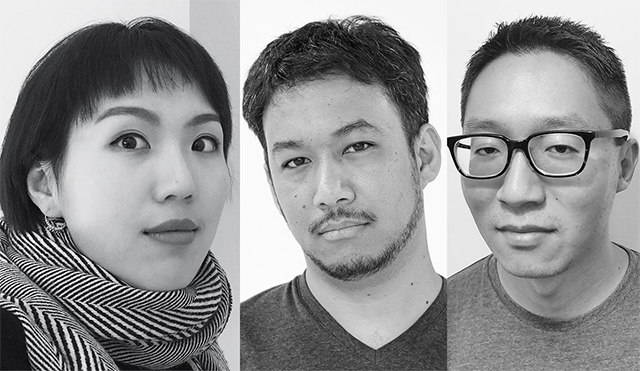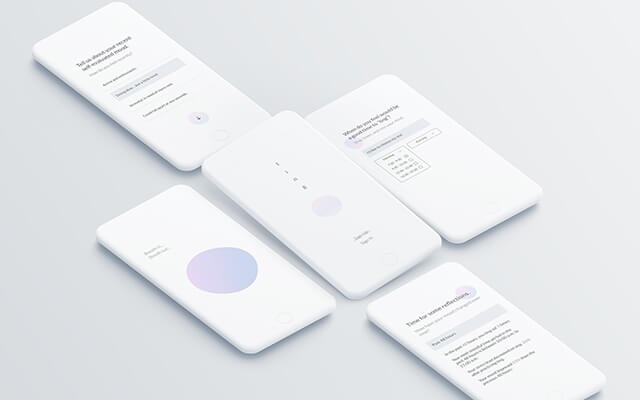Ting creators Berlynn Bai, Togo Kida, and Lou Zhang (Photo courtesy of Togo Kida)
Are you feeling stressed? If so, you’re not alone.
A recent report by the American Psychological Association found that a whopping 75 percent of U.S. adults report experiencing one stress symptom in the last month, such as lying awake at night or feeling nervous or anxious.
Seeking to help the chronically over-stressed take a breather, two students in the Master in Design Engineering program, offered jointly by the Harvard John A. Paulson School of Engineering and Applied Sciences and Graduate School of Design, developed a tool for de-stressing that can literally be at everyone’s fingertips. With the help of data scientist Lou Zhang, MDE classmates Togo Kida and Berlynn Bai created Ting, a smartphone-based stress detector, for a class project.
“People spend a lot of time each day on their phones, and at the same time, we often don’t realize how much stress we are feeling until we suffer a breakdown,” Bai said. “We wanted to create something that can be incorporated into a smartphone, which we already use extensively on a day-to-day basis, and that would nudge someone, not seek to change them.”
The pair became interested in helping reduce stress while taking the course “AI and Mental Health: Can we Prevent Depression?”, taught by Rosalind Picard, Cynthia Breazeal, and Hae Won Park, at the MIT Media Lab, which they had the opportunity to cross-register for as MDE students. Inspired by Picard’s work to sense an oncoming epileptic seizure by monitoring skin response, Kida and Bai sought to apply the same principle to stress.
The tool, currently in its design phase, tracks how an individual is using a smartphone, measuring things like the pressure they are putting on the keyboard and the time between key strokes, to determine if a user may be feeling stressed. Ting uses an algorithmic model to learn user behavior, Kida explained.
“Our premise is that, based on a user’s stress level, how they use their phone will change,” Kida said. “If the detector senses a situation where there is a significant change in stress level, it will offer a 30-second meditation session to offset that stressful moment.”
The meditation coaches a user through a breathing exercise, filling the smartphone screen with a blue and purple circle that expands and contracts to mimic slow and steady breathing.
Users can set specific days and times for meditations, and also allow Ting to send an invitation to meditate when it determines they may be feeling stressed.
“Meditation is usually a big effort and time commitment. A lot of people don’t have time for it, and they don’t really know what meditation is,” Bai said. “But just deep breathing—to be able to take a few seconds and have a space to refresh—has similar positive effects to meditation.”
As they developed Ting, their biggest challenge was working with data to build a model that could effectively determine a user’s stress level, she said. There was so much noise in the data they used that it was difficult to ensure they were tracking the right elements.
The most significant lesson they’ve learned through the project is that user feedback is vital for any commercial device to succeed, Kida said.
Ting won the 2019 iF Design Talent Award, presented annually by the German International Design Forum to recognize design excellence in projects that have an element of social good. The winners were narrowed from a field of 6,000 applicants from 70 countries.
Bai and Kida feel honored to receive the award, which has inspired them to consider the project’s future and think about Ting’s potential to make a positive impact on people’s lives.
“The MDE program has taught me to approach a problem in a much broader way,” Kida said. “I want to leverage my creativity to do good. It is really rewarding to work on a project where I can help people, and also be able to synthesize my skills.”
This video shows how an individual would use Ting, a smartphone-based stress detector.
Press Contact
Adam Zewe | 617-496-5878 | azewe@seas.harvard.edu

